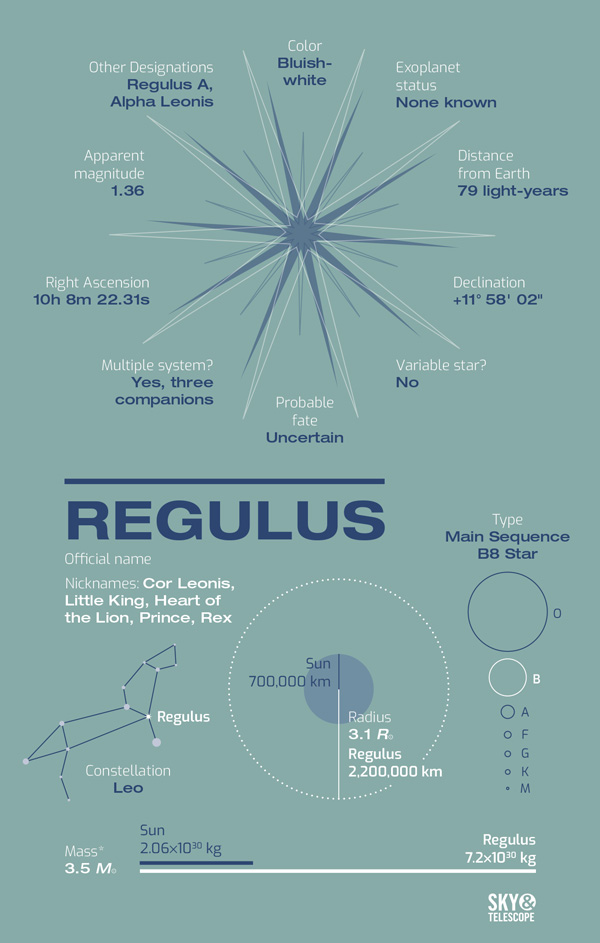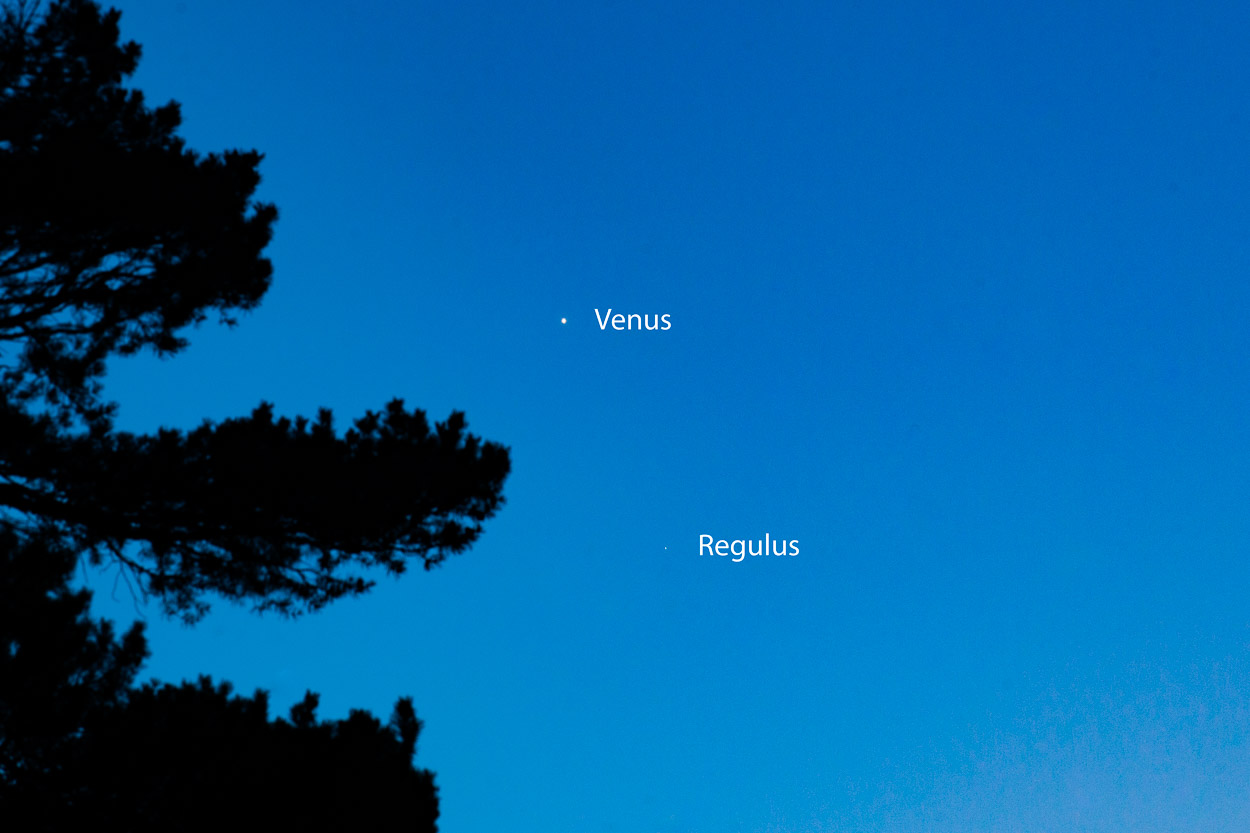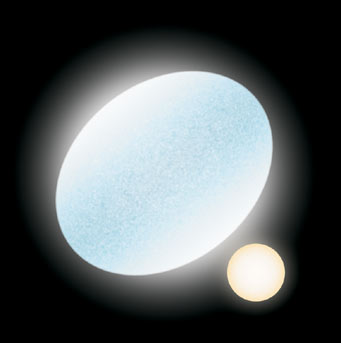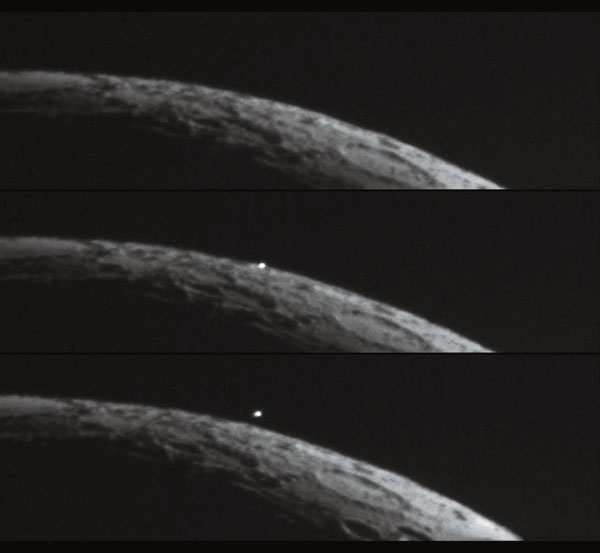Regulus Vitals

Physical Characteristics
You probably have a personal list of favorite night-sky objects that you regularly observe. Here's one you might consider adding to your list of go-tos: Regulus, the brightest star in the constellation Leo and one of the 25 brightest stars in the sky.

Daniel Johnson
This “little king” of Leo has a distorted, oblate shape due to its rotation. Many amateur astronomers are familiar with Jupiter’s “equational bulge,” which is visible in a small telescope: Rather than appearing as a true sphere, Jupiter displays a slight “flattening” near the poles that is caused by the centrifugal force created by the planet’s 10-hour spin. The surface at the equator travels around 28,000 mph.
Regulus also spins very fast — rotating every 16 hours — but because of its larger size, the actual speed of the star’s surface at the equator jumps to an incredible 700,000 mph. The stresses created by this speed distort Regulus’s shape. In fact, if Regulus were spinning only 15% faster, it would tear itself apart.

Sky & Telescope diagram
The cause of Regulus’s rapid rotation is under debate. It’s possible that the star’s gravitaty interacts with its small fleet of minor companion stars to speed up its spin — Regulus has one close white dwarf companion and two more distant stellar companions that are themselves gravitationally bound.
The presence of a white dwarf in a tight, 40-day orbit around Regulus makes the future of the system uncertain: If the white dwarf siphons enough mass from its massive companion, it might obliterate itself in a Type Ia supernova. If it doesn’t, then the two objects may orbit each other as white dwarfs or even merge into a single object.
Origin / Mythology
Like much of our astronomical tradition, the most well-known appearance of Leo in mythology comes from the Greeks, who named the constellation after the lion that Hercules defeated during his 12 labors. But the lion theme is not unique to the Greeks alone. Other cultures also found this image, including the Babylonians and Persians. In Arabic, Regulus is named Qalb al-Asad, meaning “the heart of the lion.”
Regulus itself means “little king” in Latin, and in general, various cultures have referred to Regulus using terms like “king,” “royal,” “strong,” “mighty,” “great,” etc. Interestingly, all of these terms are also appropriate for a lion.
How to See Regulus
Leo can be observed throughout the year except around September, when the constellation moves into the glare of the Sun. However, spring is a better time for viewing, as the star moves into a good position early in the evening. Leo is notable for its “sickle” — a group of stars on the right side of the constellation that form a kind of rough hook shape, sometimes compared to a “reversed question mark.” Regulus is the bright star that makes the point of the question mark.
Similar to the way the Big Dipper can serve as a pointer to Polaris, two stars on the left-hand side of the Dipper’s bowl can serve as pointers to Regulus in the opposite direction of the sky. The trick doesn’t work quite as well as it does for Polaris, because the distance is greater and the line is a little off-center, but it’s easy to remember.

Regulus happens to be one of the brightest stars near the ecliptic, and that’s where things get fun. Its proximity to the plane of the solar system means that the star frequently participates in lunar and planetary conjunctions and occultations.
 1
1









Comments
AlphaCentauri
March 9, 2019 at 6:33 pm
If the white dwarf were to explode into a supernova, I wonder what effect, if any, that would have on the Earth? 79 light years seems kind of close.
You must be logged in to post a comment.
You must be logged in to post a comment.